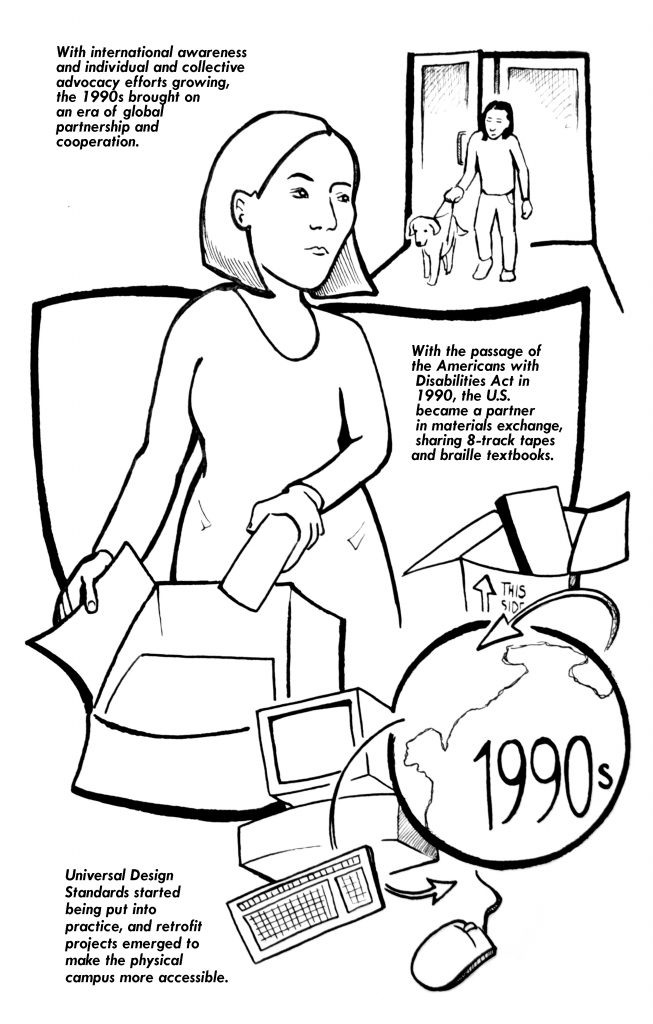With the United Nations Declaration on the Rights of Disabled Persons in 1975, the international community began adopting a rights-based rather than charitable or medical approach to disability for the first time.
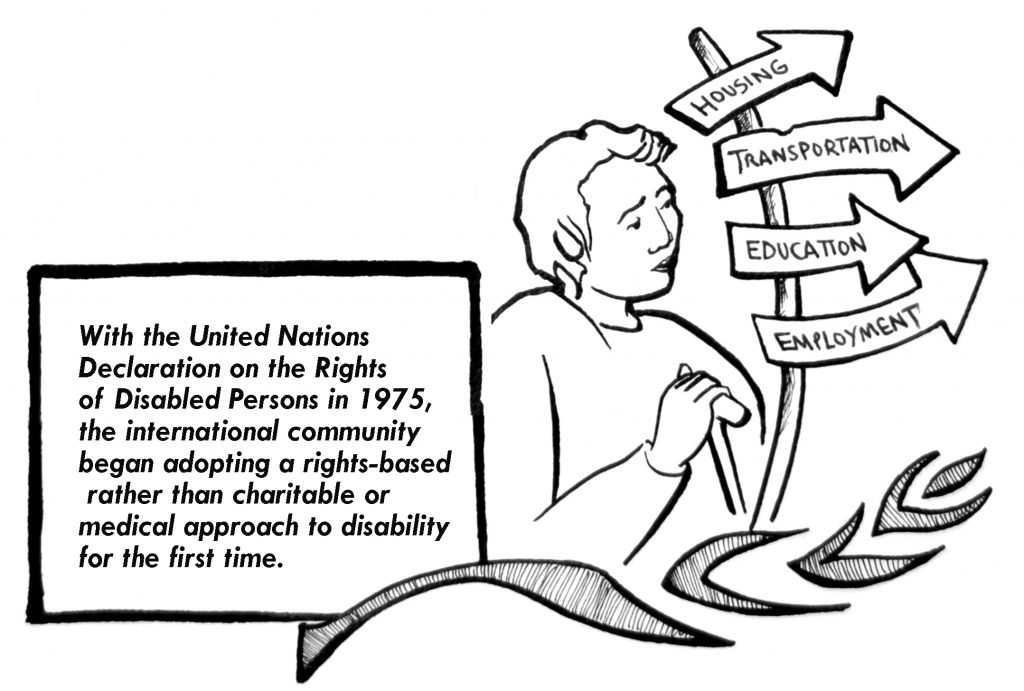
While international disability awareness campaigns ramped up in the 1980s, some early work to facilitate accessibility at McMaster was championed by library services prior to guiding legislation.
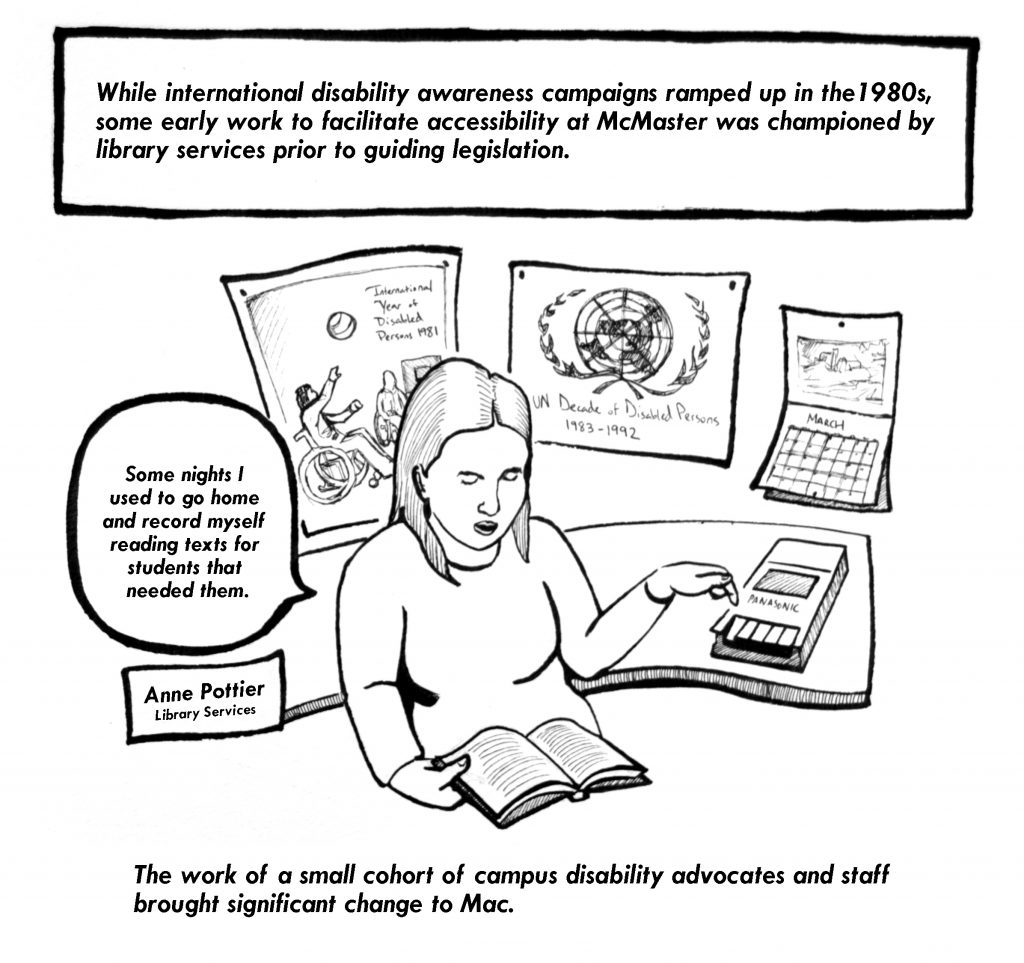
The work of a small cohort of campus disability advocates and staff brought significant change to Mac.
These changes were bolstered by the 1982 adoption of the Canadian Charter of Rights and Freedoms which affirmed Canada’s commitment to human rights. [Canadian Charter of Rights and Freedoms. Section 15: Every individual has the right to equal protection and benefit of the law without discrimination based on race, ethnic or national origin, colour, religion, sex, age, or mental or physical disability]
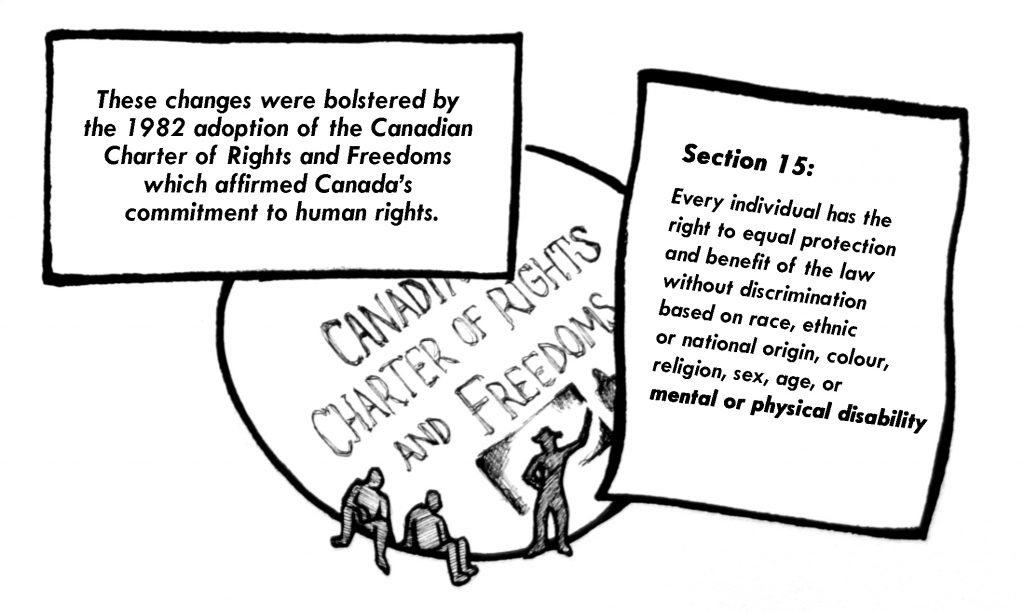
decades: 1980s
Accessibility awareness and priorities have shifted over time. The 1980s were a transitional moment, marking the first time that human rights complaints could be filed. Students with disabilities who attended McMaster were often isolated from one another. Accessibility in this era was defined by curb cuts and freight elevators. Other. Accommodations at this time were mostly informal and DIY.
Timeline events: (1983) MSU Human Rights Code passes; Disability Awareness Days; (1985) Financial Assistance Act; (1985) Canada Student Loans Act; (1985) Canada Human Rights Act
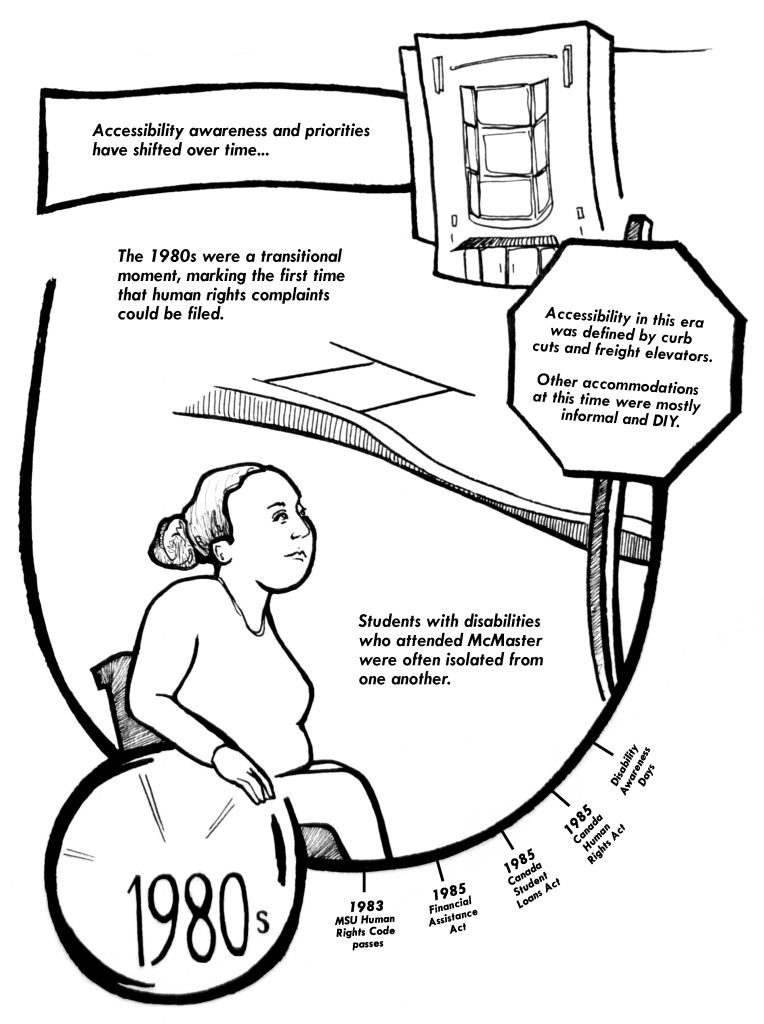
decades: 1990s
With international awareness and individual and collective advocacy efforts growing, the 1990s brought on an era of global partnership and cooperation. With the passage of the Americans with Disabilities Act in 1990, the U.S. became a partner in materials exchange, sharing 8-track tapes and braille textbooks. Universal Design Standards started being put into practice, and retrofit projects emerged to make the physical campus more accessible.
